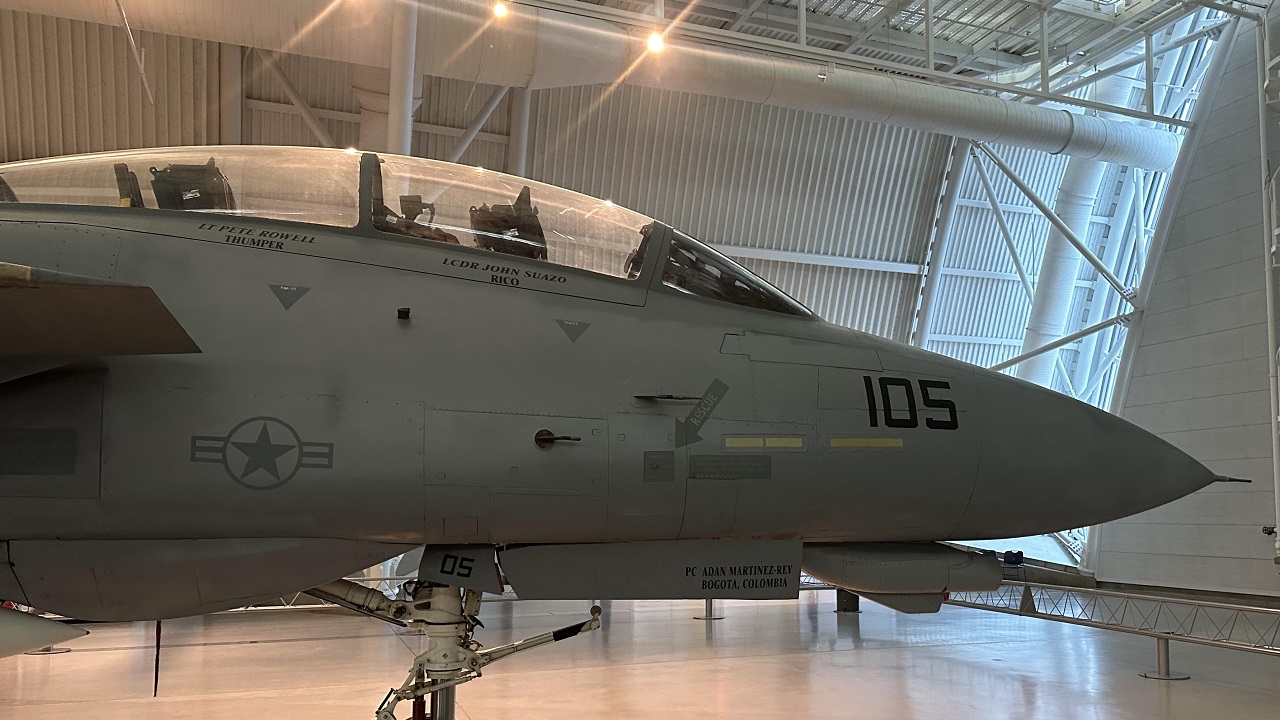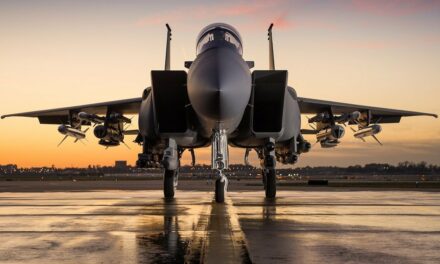We support our Publishers and Content Creators. You can view this story on their website by CLICKING HERE.
Key Points: The F-14 Tomcat, renowned for its range, performance, and iconic design, could have seen an extended service life with proposed upgrades such as the F-14D Quickstrike, ST-21 Super Tomcat, AST-21 Attack Super Tomcat, and ASF-14 Advanced Strike Fighter.
-These variants featured modernized avionics, improved engines, additional weapons capabilities, and enhanced maneuverability. However, the U.S. Navy opted for the more versatile and cost-effective F/A-18 Hornet and Super Hornet, citing the F-14’s high maintenance demands and aging systems.
-While the Hornet has proven its value, the Tomcat’s unrealized potential remains a compelling “what if” of naval aviation history.
Could the U.S. Navy Have Extended the Life of the F-14 Tomcat?
If you’ve read 19FortyFive for some time or other places I write, you know how much I love the F-14 Tomcat.
The airplane looked amazing, it had great performance, it was combat-proven, and it had great range.
Yet the F/A-18 Hornet and later the F/A-18 E/F Super Hornet took its place. But maybe the U.S. Navy could have kept the Tomcat in service longer.
However, the aging Tomcat had problems. It was expensive to keep in the air, and maintenance periods were difficult and lengthy. The avionics needed an update, and many other systems on the jet were becoming obsolete.
However, let us just imagine for a few minutes what could have been…
F/A-18s Had Advantages Over the F-14s
The Hornet and Super Hornet had less range than the Tomcat, but the Navy sought something new and more technologically advanced.
The F/A-18s were smaller and highly maneuverable. The F/A-18 was seen as a more versatile multi-role fighter that could do much more than the Tomcat’s primary mission, which was to defend the fleet.
F-14 Tomcat. Image taken at National Air and Space Museum on October 1, 2022. Image by 19FortyFive.
But what if the Navy could have updated the Tomcat and kept it longer?
There was such a movement and new proposals for an advanced F-14. Even as far back as 1987, the Tomcat’s manufacturer Grumman thought up four new upgraded variants that would have prepared the F-14 to serve beyond its later retirement in 2006.
Four Proposals to Extend the Life of the Tomcat
One interesting model was the F-14D “Quickstrike.” This variant was designed to carry a huge load of modern munitions such as the Harpoon, HARM and SLAM (Standoff Land Attack Missile). The Quickstrike would also have a new radar and fire control system for the back seat Radio Intercept Officer (RIO). The other great thing about Quickstrike was that it just needed a software update to fire the modern missiles.
Another proposed variant was the ST-21 nicknamed the “Super Tomcat of the 21st Century.” The Super Tomcat of the 21st Century would have added modifications such as a wing glove design and additional sensors near the weapons mounts. It would also receive new engines, the F110-GE-129, with 29,000 pounds of thrust. This would enable “super cruise” and a speed of MACH 1.3. For better maneuverability there would have been thrust vectoring nozzles. This would have created even more range and the ability to take on improved air superiority roles and better intercept capabilities.
To build more on that proposed model, there was the AST-21, the “Attack Super Tomcat for the 21st Century.” This would have extra weapons mounts for larger bombs and even the capability to drop nuclear weapons. The AST-21 had even better range than the ST-21 and the modern avionics that would have allowed the Tomcat to serve into the 2010s.

F-14 Tomcat. Image Taken at U.S. Air and Space Museum outside of Washington, D.C. Image Credit: 19FortyFive.com
Finally, there was the ASF-14 Advanced Strike Fighter. The Aviasionist described this model as “a totally new aircraft with the F-14 shape and it would have taken advantages of the new materials and new technologies developed for the Advanced Tactical Fighter and Advanced Tactical Attack Aircraft programs.”
The Navy Just Said No
Unfortunately, the Navy passed on all of those proposed Tomcats. FoxTrot Alpha’s Tyler Rogoway interviewed retired Lieutenant Commander Joe “Smokin” Ruzicka about this decision in 2014.
Ruzicka said the F-14 and the F/A-18E/F could be explained “using the analogy of a muscle car to a mini-van, with the Tomcat being the former and the Super Hornet being the latter. The muscle car doesn’t have much to it in the way of fancy technology, just some raw speed and the coolness of a Steve McQueen movie, but it gets the job done. The mini-van on the other hand is a very nice car, complete with DVR’s for the kids, Air Conditioning, power windows, and lots of places to put your sippy cup. It’s a great car—-but it’s still a mini-van.”

F-14 Tomcat. Image taken at National Air and Space Museum on October 1, 2022. Image by 19FortyFive.
That is one colorful explanation. Those proposed options for a souped-up F-14 sounded great, but the F/A-18 won. We will never know what would have happened to naval aviation had the maritime branch decided to keep the Tomcat and given it a new lease on life.
The Hornet and Super Hornet, however, have served the navy well and the F-14 did have those reliability issues to begin with.
You need to know that the Navy had options to improve the Tomcat; it just didn’t take the plunge.
About the Author: Dr. Brent M. Eastwood
Brent M. Eastwood, PhD is the author of Don’t Turn Your Back On the World: a Conservative Foreign Policy and Humans, Machines, and Data: Future Trends in Warfare plus two other books. Brent was the founder and CEO of a tech firm that predicted world events using artificial intelligence. He served as a legislative fellow for U.S. Senator Tim Scott and advised the senator on defense and foreign policy issues. He has taught at American University, George Washington University, and George Mason University. Brent is a former U.S. Army Infantry officer. He can be followed on X @BMEastwood.

 Conservative
Conservative  Search
Search Trending
Trending Current News
Current News 





